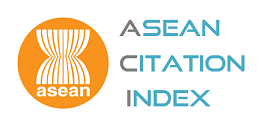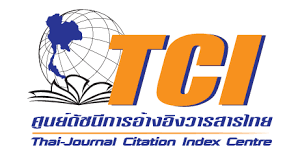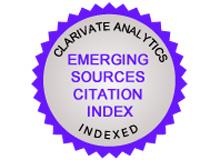Perceptions of Caregivers Regarding Healthcare Service Accessibility of Children with Craniofacial Anomalies: A Qualitative Descriptive Study
DOI:
https://doi.org/10.60099/prijnr.2025.271221Keywords:
Caregivers, Children, Craniofacial anomalies, Healthcare accessibility, Perceptions, Qualitative descriptive study, ThailandAbstract
Healthcare service accessibility is crucial to treatment outcomes and results in a better quality of life for children with craniofacial anomalies. This qualitative descriptive study explored caregivers’ perceptions regarding healthcare service accessibility for children with craniofacial anomalies in Thailand. Participants were primary caregivers of children with non-cleft lip/palate craniofacial anomalies aged 3 months to 18 years. Data were collected through focus group interviews with 37 caregivers across six groups and semi-structured telephone interviews with five caregivers (42 caregivers) who brought their children for treatment in four super-tertiary hospitals with craniofacial centers from October 2018 to February 2021. Qualitative data were analyzed using the content analysis method.
Three main themes emerged from the findings: 1) accessing treatment required time and many steps, 2) receiving treatment from a specialist by seeking information and advice, and 3) difficulties of hospital visits, including traveling distance and expenses. Our findings reflect that healthcare access for children with craniofacial anomalies remains a complex challenge associated with socioeconomic status, geographic characteristics, and the healthcare system, including health insurance benefits. Moreover, treatment for these children usually requires specialists typically located in university hospitals in metropolitan areas, thus limiting access for children in rural or underserved areas. To improve access to optimal care for these children, healthcare personnel, including nurses, should provide comprehensive information about potential hospitals with craniofacial centers, expedite referral processes, and offer assistance tailored to individual needs to enhance healthcare effectiveness.
References
Stock NM, Marik P, Magee L, Aspinall CL, Garcia L, Crerand C, at al. Facilitating positive psychosocial outcomes in craniofacial team care: strategies for medical providers. Cleft Palate Craniofac J. 2020;57(3):333-43. doi: 10.1177/1055665619868052. DOI: https://doi.org/10.1177/1055665619868052
Tonne E, Due-Tonnessen BJ, Wiig U, Stadheim BF, Meling TR, Helseth E, et al. Epidemiology of craniosynostosis in Norway. J Neurosurg Pediatr. 2020;26:68-75. doi:10.3171/2020.1.peds2051. DOI: https://doi.org/10.3171/2020.1.PEDS2051
Karkku LK, Suominen A, Svedstrom-Oristo AL. Cranifacial microsomia-more than a structural malformation. Orthod Craniofac Res. 2023;26:117-22. doi: 10.1111/orc.12592. DOI: https://doi.org/10.1111/ocr.12592
Farhan TM, Al-Abdely BA, Abdullateef AN, Jubair AS. Craniofacial anomaly association with the internal malformations in the pediatric age group in Al- Fallujah city-Iraq. BioMed Res Int. 2020:1-10. doi: 10.1155/2020/4725141. DOI: https://doi.org/10.1155/2020/4725141
Sawasdipanich N, Chaithat B, Rojvachiranonda N, Dangsomboon A. Epidemiological characteristics of children with non-cleft lip/palate craniofacial anomalies. J Craniofac Surg. 2022;33(2):610-4. doi: 10.1097/scs.0000000000008136. DOI: https://doi.org/10.1097/SCS.0000000000008136
Hoffman C, Yuan M, Boyke A, Perera I, Rabbun-Birnbaum C, O’Connor, et al. Impact of a multidisciplinary craniofacial clinic for patients with craniofacial syndromes on patient satisfaction and outcome. Cleft Palate Craniofac J. 2020;57(12):1357-61. doi: 10.1177/1055665620948767. DOI: https://doi.org/10.1177/1055665620948767
Rojavachiranonda N, Chaithat B, Sawasdipanich N, Dangsomboon A, Khwanngern K, Sitthikamtiub W, et al. Current situation of non-cleft craniofacial anomalies in Thailand: a multicenter study. J Craniofac Surg. 2024: In press:1-4. doi: 10.1097/SCS.0000000000010754. DOI: https://doi.org/10.1097/SCS.0000000000010754
Rojavachiranonda N. Different faces…can be changed. Bangkok: Amarin Printing & Publishing; 2021 (in Thai).
Maneepairoj P, Potiwan P. The right to public health service accessibility in Thailand. RDHS. 2020;13(1):300-9 (in Thai).
Department of empowerment of persons with disabilities [Internet]. Bangkok; 2020. Empowerment of persons with disabilities Act, B. E. 2550 (2007) and additional amendments (No.2) Act, B.E.2556 (2013) Section 20; 2020 [cited 2023 May 19]. Available from: https://dep.go.th/images/uploads/files/15-12-63.pdf
Jolibois MI, Roohani I, Moshal T, Lasky S, Urata M, Munabi NCO, et al. Sociodemographic factors associated with delayed resentation in craniosynostosis surgery at a tertiary children’s hospital. Plast Reconstr Surg Glob Open. 2024;12:e6035:1-9. doi: 10.1097/GOX.0000000000006035. DOI: https://doi.org/10.1097/GOX.0000000000006035
Rahman M, Avila S, Heike CL, Stock NM, Stueckle L, Schefer A, et al. Psychosocial experiences of Spanish-speaking parents of children with craniofacial microsomia. J Craniofac Surg. 2024;In press:1-10. doi: 10.1097/SCS.0000000000010295. DOI: https://doi.org/10.1097/SCS.0000000000010295
Adam KBC, Hariri F, Murat NA, Yin LM, Amran MNH. Parental experiences in the management of children with syndromic craniofacial diagnoses in Malaysia. IMJM. 2021;20(3):53-9. doi: 10.31436/imjm.v20i3.1625. DOI: https://doi.org/10.31436/imjm.v20i3.1625
Allaf H, Helal N, Basri O, AlShadwi A, Sabbagh H. Care barriers for patients with nonsyndromic orofacial clefts in Saudi Arabia: a cross-sectional study. Cleft Palate Craniofac J. 2022;59(8):1001-9. doi: 10.1177/10556656211026536. DOI: https://doi.org/10.1177/10556656211026536
Sawasdipanich N, Chaithat B, Dangsomboon A. Healthcare problems and healthcare service accessibility of children with craniofacial anomalies: caregivers’ perceptions. JTNMC. 2021;36(2):110-28. Available from: https://he02.tcithaijo.org/index.php/TJONC/article/view/244688 (in Thai).
Feragen KB, Stock NM, Myhre A, Due-tØnnessen BJ. Medical stress reactions and personal growth in parents of children with a rare craniofacial condition. Cleft Palate Craniofac J. 2020;57(2):228-37. doi: 10.1177/1055665619869146. DOI: https://doi.org/10.1177/1055665619869146
Watanapa P. Human rights article: Rights to access of healthcare in Thai people in a past decade. [cited 2023 May 20]. Available from: https://www.constitutionalcourt.or.th/occ_web/ewt_dl_link.php?nid=1491.
World Health Organization. Health equity. [cited 2023 May 20]. Available from: who.int/healthsystems/topics/equity/en/
Schwarz T, Schmidt E, Bobek J, Ladurner J. Barriers to accessing health care for people with chronic conditions: a qualitative interview study. BMC Health Serv Res. 2022;22:1037:1-15. doi: 10.1186/s12913-022-08426-z. DOI: https://doi.org/10.1186/s12913-022-08426-z
Cherdchoo A, Boonshuyar C, Chareonkul C. Accessibility to health care service of the elderly in Bang Pa-in district, Ayuthaya province. J of Safety and Health. 2019; 12(2):1-13. Available from: https://he01.tci-thaijo.org/index.php/JSH/article/view/196465 (in Thai).
Mongkhonsuebsakul W. Thailand’s access to healthcare services: the reflection and inequality of vulnerable group. SAU J of Soc Sci & Humanities. 2022;6(1): 55-69. Available from: https://so05.tci-thaijo.org/index.php/saujournalssh/article/view/257255 (in Thai).
Zerper AS, Nowinski D, Ramklint M, Oster C. Parents experiences of their child’s craniosynositosis and the initial care process. J Craniofac Surg. 2020;31(1):251-6. doi: 10.1097/SCS.0000000000006033. DOI: https://doi.org/10.1097/SCS.0000000000006033
Nidey N, Wehby GL. Barriers to health care for children with orofacial clefts: a systematic literature review and recommendations for research priorities. Oral Health Dent Stud. 2019;2(1):1-12. Available from: https://riverapublications.com/assets/files/pdf_files/barriers-to-health-care-for-children-with-orofacial-clefts-a-systematic-literature-review-and-recommendations-for-research-priorities.pdf DOI: https://doi.org/10.31532/OralHealthDentStud.2.1.002
Turale S. A brief introduction to qualitative description: a research design worth using. Pacific Rim Int J Nurs Res [Internet]. 2020 [cited 2020 Oct 20]; 24(3),289-91. Available from: https://he02.tci-thaijo.org/index.php/PRIJNR/article/view/243180/165336
Tong A, Sainsbury P. Craig J. Consolidated criteria for reporting qualitative research (COREQ): a 32-item checklist for interview and focus groups. Int J Qual Health Care. 2007;19(6):349-57. doi: 10.1093/intqhc/mzm042. DOI: https://doi.org/10.1093/intqhc/mzm042
Sandelowski M. Focus on research method: What ever happened to qualitative description? Res Nurs Health 2000;23(4): 334-340. doi: 10.1002/1098-240X(200008)23:43.0.CO;2-G. DOI: https://doi.org/10.1002/1098-240X(200008)23:4<334::AID-NUR9>3.0.CO;2-G
Lincoln YS, Guba EG. Naturalistic inquiry. Newbury Park, California: Sage; 1985. DOI: https://doi.org/10.1016/0147-1767(85)90062-8
Whitaker LA, Pashayan H, Reichman J. A proposed new classification of craniofacial anomalies. Cleft Palate J. 1981;18(3):161-76. PMID: 6941862.
National Health Security Office [Internet]. Bangkok: 2022. Human insurance rights users manual; 2022 [cited 2023 May 19]. Available from https://www.nhso.go.th/page/coverage_rights_injury
Chonnapasatid W. Viwattanatipa N. Manopatanakul S. Jaruratanasirikul S. Thai Universal Health Care Coverage scheme promotes the accessibility to cleft lip/palate treatment: the result of cleft care provision assessment using modified Geographic Information System. BMC Health Serv Res. 2022; 22(416):1-10. doi: 10.1186/s12913-022-07784-y. DOI: https://doi.org/10.1186/s12913-022-07784-y
Suriyakarn K. Role of social worker in patient holistic assessment. Bangkok: Amarin Printing & Publishing; 2021.
Carmona R, Jones TA, Rosenberg J. Barriers to accessing medical care for Hispanic individuals with craniofacial conditions. Plast Surg Nurs. 2020;40(2):73-80. doi: 10.1097/PSN.0000000000000302. DOI: https://doi.org/10.1097/PSN.0000000000000302
Downloads
Published
How to Cite
Issue
Section
Categories
License
Copyright (c) 2025 Pacific Rim International Journal of Nursing Research

This work is licensed under a Creative Commons Attribution-NonCommercial-NoDerivatives 4.0 International License.
Copyright: The Pacific Rim International Journal of Nursing Research, Thailand Nursing & Midwifery Council has exclusive rights to publish, reproduce and distribute the manuscript and all contents therein.








.png)



